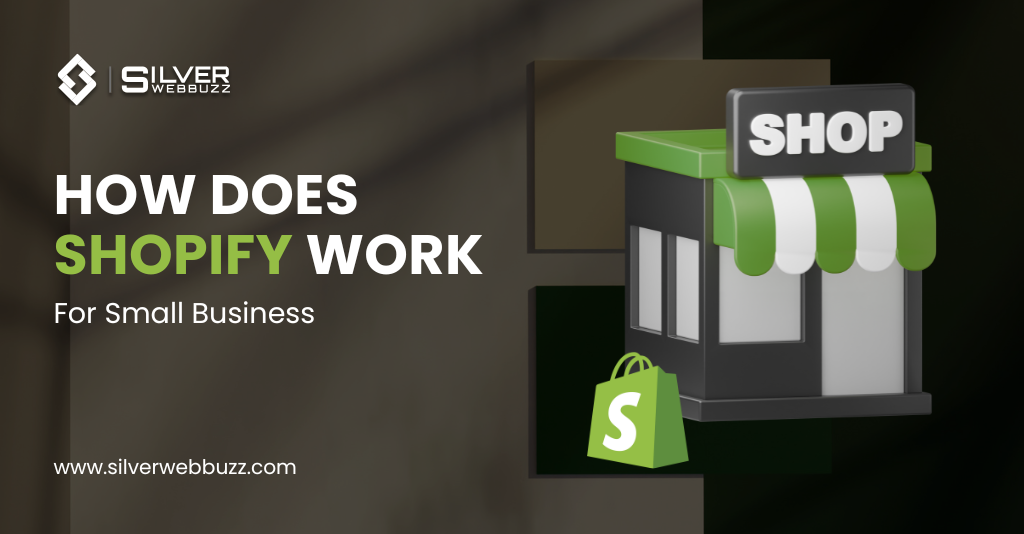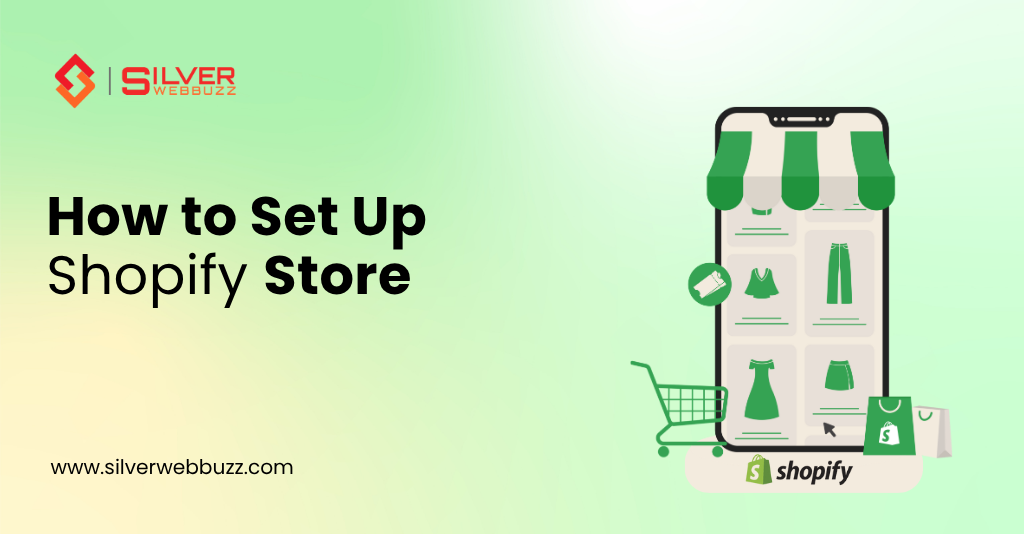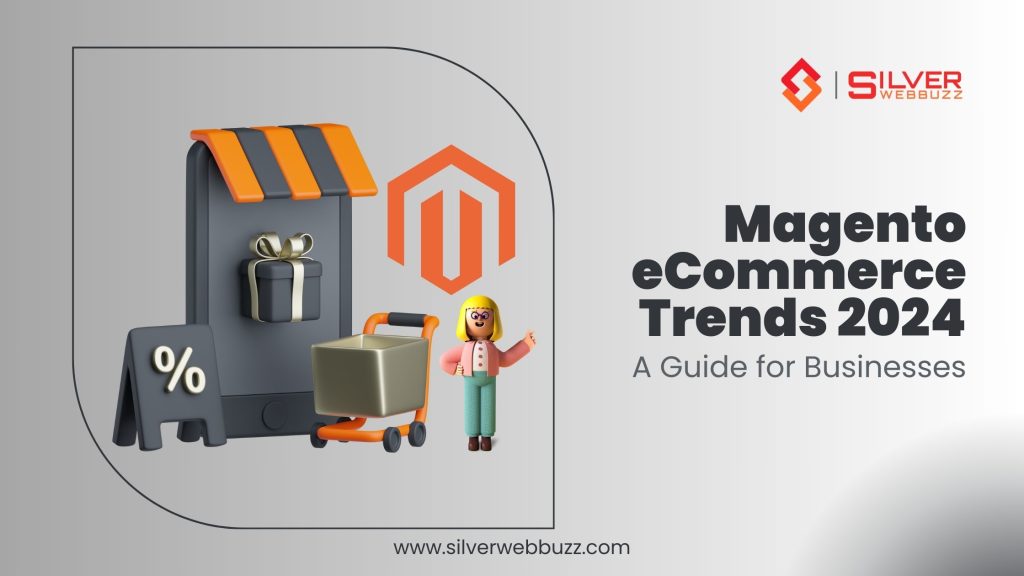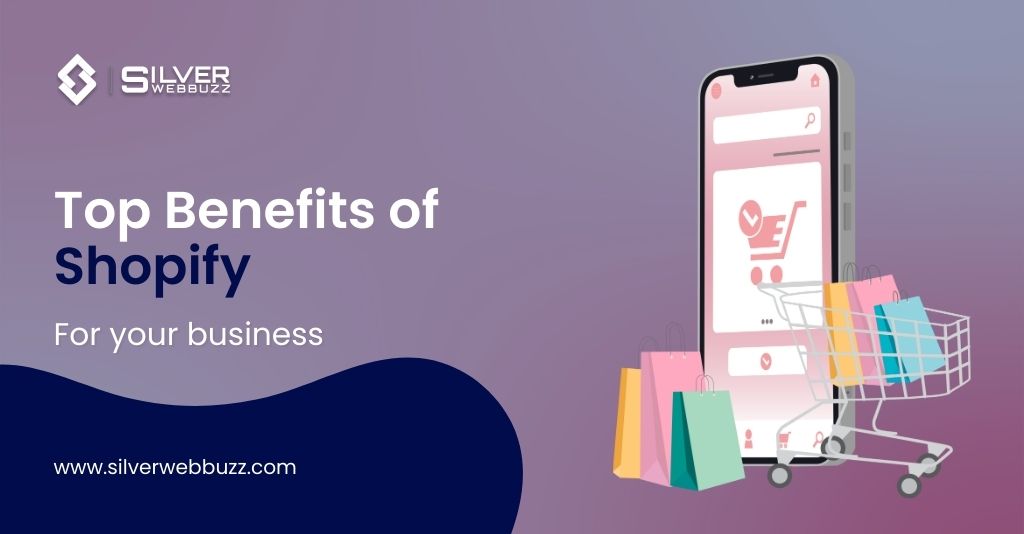The year 2025 marks a critical shift in the way small businesses operate, sell, and grow. With the rise of digital consumption and mobile-first users, having an online presence is no longer optional—it’s essential. Consumers are browsing, comparing, and buying online more than ever before, and small businesses must adapt to stay competitive.
If you’ve ever wondered how does Shopify work for small businesses, you’re in the right place. Shopify has become a go-to platform for entrepreneurs and startups seeking to launch online stores quickly and efficiently. Known for its ease of use, powerful features, and scalability, Shopify is now powering millions of online businesses globally.
In this detailed guide, we’ll break down how Shopify works, explore its benefits and challenges, dive into 2025’s latest trends, and help you get started with your own store.
What is Shopify?

To truly understand how does Shopify work, it’s essential to first define what the platform is and why it’s a top choice for businesses in 2025.
At its core, and is a cloud-based Software-as-a-Service (SaaS) platform that helps individuals and businesses launch and manage their own online store with ease. It eliminates the need for deep technical skills, giving even first-time entrepreneurs the tools to sell physical goods, digital products, or services online.
The Evolution of Shopify
Initially created in 2006 to sell snowboards online, the platform has grown into a complete commerce solution. Over the years, it has incorporated advanced features like POS systems, mobile apps, integrated marketing tools, and global sales channel support, transforming from a simple storefront builder into a powerful commerce ecosystem.
Market Dominance
In 2025, Shopify continues to lead the eCommerce industry, especially among small to mid-sized businesses. Its ever-expanding toolkit, user-friendly interface, and flexibility have made it the go-to choice for startups and growing brands worldwide. Many entrepreneurs no longer ask “does Shopify work?” but rather “Why use Shopify over any other platform?”
How Does Shopify Work?

To answer “Shopify how it works,” think of it as your online store’s virtual headquarters. Everything you need—from inventory and payments to customer service and marketing—is managed from one dashboard.
Here’s a simplified breakdown of how the platform functions:
1. Cloud-Based SaaS Structure
The system runs fully online. No software installations, no physical servers—just log in from any internet-enabled device. This flexibility is key for business owners who need to manage their stores on the go or work remotely.
2. Creating an Account & Building Your Store
Getting started is simple:
- Visit the official site and begin a free trial (Shopify.com)
- Choose a name for your store
- Answer basic setup questions
In just minutes, your store is live. No complicated setup or IT headaches—one of the core reasons why it is popular among small businesses.
3. Dashboard & User Interface
The main control panel is where you’ll manage everything: add or edit products, track orders, manage customers, install apps, and configure settings. The clean and intuitive layout ensures that even beginners can navigate with confidence.
4. Payments & Transactions
You can choose from 100+ payment gateways like PayPal or Stripe. There’s also Shopify Payments, a built-in option that removes extra transaction fees. If you go with a third-party processor, note that the platform might charge a small commission.
5. Managing Orders & Inventory
Once a customer places an order:
- You get notified
- Inventory adjusts in real time
- The customer receives confirmation and tracking details
This automated workflow answers the question, “how does Shopify work for growth-focused businesses?”—by freeing up time and reducing human errors.
Benefits for Small Businesses

Still wondering why use Shopify? Let’s explore its practical advantages:
1. No Coding Needed
Business owners can design and manage a complete online store without touching a single line of code. Drag-and-drop builders and pre-built elements simplify the entire experience.
2. Theme Variety & Customization
Hundreds of themes—both free and premium—are available, each crafted for specific industries. Whether you’re in fashion, electronics, or wellness, there’s a layout that suits your brand style.
3. SEO & Marketing Built-In
Features include:
- SEO-friendly URL structures
- Editable meta tags
- Integrated blog
- Email marketing tools
- Discount creation and campaign tracking
These tools help small businesses compete with bigger brands without needing a separate marketing platform.
4. Scalability as You Grow
Whether you’re just starting or scaling up fast, the platform grows with you. Add more products, upgrade your plan, or expand to international markets as needed.
5. App Ecosystem
From chatbots to loyalty programs, the App Store offers thousands of integrations. This modularity is one of the strongest aspects of how Shopify works to customize every business.
6. Fast, Reliable, and Secure
With 99.99% uptime, built-in SSL certificates, and fast-loading themes, customers enjoy a smooth and secure shopping experience—factors that directly influence trust and conversion rates.
7. Sell Everywhere
You’re not limited to just your website. Integrate with:
- Facebook & Instagram
- TikTok & Pinterest
- Amazon, eBay, and Walmart
- Google Shopping
This omnichannel flexibility is a direct answer to how Shopify works for multi-platform selling.
Common Challenges with Shopify in 2025
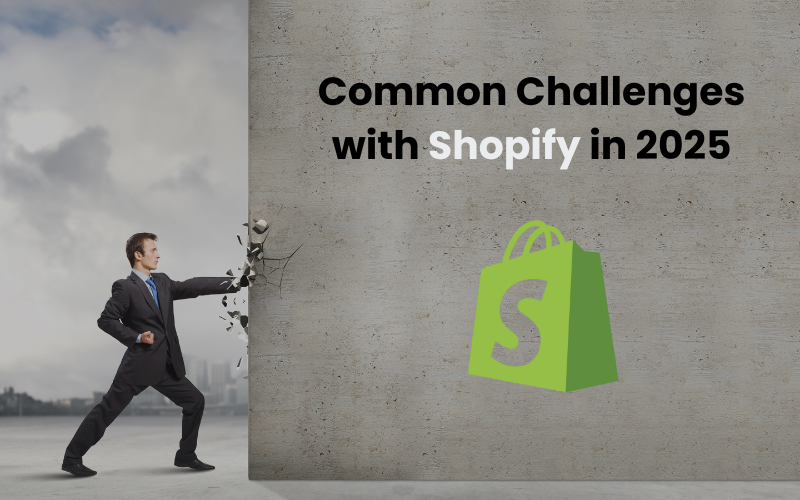
While Shopify remains one of the top ecommerce platforms for small and midsize businesses, it’s important to have a realistic view of its limitations. Understanding these challenges can help you plan better and optimize your online store effectively. Below, we explore some of the most common issues Shopify users encounter in 2025—and how to address them.
1. Recurring Monthly Costs and Hidden Expenses
Its offers immense value, but it’s not a free tool. In 2025, the basic plan starts at $39/month, with advanced plans going much higher. Additionally, if you’re using third-party apps or premium themes, those often come with extra monthly or annual costs.
What Makes This a Challenge?
- Small businesses operating on lean budgets may find the cost of running a store creeping up quickly.
- Essential features like advanced analytics, shipping integrations, or upsell tools often require paid apps.
Custom domains, email marketing tools, or Shopify Plus (for larger businesses) also add to the cost.
Solution: Always start with a clear budget. Before installing any app, assess if it’s critical to your business. Also, compare free and paid versions carefully. Bundling multiple features in one app can help reduce expenses.
How Shopify works becomes more cost-efficient when you’re strategic about the tools and features you need.
2. Backend Limitations and Developer Dependency
It is known for its ease of use, but when it comes to advanced customizations, the platform can feel a bit restrictive, especially for business owners with no coding background.
Why This Is a Concern:
- Its uses its proprietary templating language called Liquid.
- Full control over backend logic, server-side customizations, or database access is limited unless you hire a developer.
- Customizing the checkout experience or creating dynamic content layouts often requires technical expertise.
- For users asking “how does Shopify work”, it’s crucial to understand that while front-end updates are easy through drag-and-drop builders, backend modifications may not be as flexible.
Solution: Work with experienced Shopify developers or certified partners like Silver WebBuzz for advanced needs. They can build scalable, secure, and fully customized Shopify stores without compromising performance.
3. App Dependency Can Affect Speed and UX
One of its strengths is its extensive app marketplace—but that can also become a downside.
The Problem:
- Advanced features such as loyalty programs, upsells, SEO tools, and subscription models are often delivered via third-party apps.
- Installing too many apps can clutter your backend, leading to a slower site speed, conflicting scripts, or UI inconsistencies.
- Some apps are not fully optimized, and uninstalling them may leave behind unused code.
- This is a classic case of how Shopify works—the platform keeps its core lean, expecting users to build on it via apps. But without careful app management, your store can get bloated quickly.
Solution: Audit your installed apps quarterly. Remove or replace poorly performing ones. Choose apps that offer multiple features under one roof. Avoid overlapping functionalities. And most importantly, track your page load speed regularly.
4. Expert Help Required for Unique Functionalities
If your ecommerce business has very specific needs—like a custom booking engine, a tailored subscription workflow, or advanced B2B features—you may find its default functionality limited.
Challenges Faced:
- Out-of-the-box, it is designed for typical B2C use cases.
- Extending functionalities requires using its APIs, modifying Liquid code, or developing private apps.
- DIY approaches can lead to technical debt or bugs without proper planning.
- This is where knowing Shopify how it works pays off. While the platform is friendly for beginners, scaling or customizing it for a unique brand experience often calls for professional help.
Solution: Engage a Shopify development company like Silver WebBuzz that understands both ecommerce strategy and technical execution. Whether it’s app integrations or creating custom functionality, expert support ensures everything works smoothly and is future-proof.
5. Transaction Fees Outside Shopify Payments
Many new store owners are surprised to learn that its charge additional fees if you use payment gateways other than Shopify Payments (e.g., PayPal, Stripe, etc.).
Key Considerations:
- Its Payments are available in limited countries. If it’s not supported in your region, you must use a third-party gateway and incur extra transaction fees, sometimes 1–2% per sale.
- For high-volume stores, these fees can eat into margins.
- Payment setup also influences your checkout UX—which can affect conversion rates.
- So if you’re questioning does Shopify work for high-revenue or international sellers, payment flexibility can be a concern.
Solution: Check whether Shopify Payments is available in your country before committing. If it’s not, consider building your margins to absorb third-party fees. Or use integrated payment apps that offer lower transaction rates.
Latest Shopify Trends and Stats in 2025

Understanding the current Shopify trends is essential for small businesses aiming to stay competitive in the ecommerce space. In 2025, Shopify is not just a platform—it’s an evolving digital ecosystem designed to meet the needs of AI-driven search, mobile commerce, and customer personalization. Let’s explore the top trends and statistics that explain how Shopify works to future-proof small businesses today.
1. Mobile-First Shopping Experience
- Over 75% of its transactions now happen on mobile devices.
- Mobile commerce isn’t a rising trend—it’s the dominant shopping behavior. In response, Shopify has enhanced its mobile optimization like never before.
Key Upgrades in 2025:
- Faster loading mobile themes with auto-adjusting layouts
- Thumb-friendly navigation for product pages, filters, and menus
- Mobile-optimized checkout to reduce cart abandonment
- Dynamic product grids that adjust per device screen size
For small businesses, this means you don’t need a separate mobile app or developer to offer an outstanding mobile experience. It handles it for you, out of the box.
Pro Tip: Choose mobile-first themes from Shopify’s theme store and test your pages with Google’s Mobile-Friendly Test to ensure your UX is on point.
2. AI-Powered Features for Smarter Selling
In 2025, Shopify is deeply integrated with artificial intelligence. These AI features don’t just automate tasks—they empower small business owners to make smarter, faster decisions with less manual effort.
Here’s how Shopify’s AI is transforming ecommerce:
- Personalized Product Recommendations: its AI learns customer preferences and suggests relevant products, increasing average order value.
- Smart Inventory Forecasting: It predicts demand spikes and restocks suggestions based on historical sales trends, holidays, and even weather data.
- 24/7 Chatbots: AI chatbots handle customer inquiries, provide shipping updates, and help with product selection—all without human intervention.
- AI-Powered Copywriting: Generate product descriptions, meta titles, and blog content using built-in AI tools to save time and improve SEO.
With AI taking care of the backend, business owners can focus on strategy, branding, and customer experience.
Example: A skincare store on Shopify can use AI to recommend routines based on customer skin type or past purchases—personalization that builds loyalty.
3. Shopify’s Growth Stats in 2025
Shopify’s rapid growth reflects how indispensable it has become for small and midsize businesses worldwide.
Latest Shopify Statistics:
- 3.5+ million businesses actively use Shopify globally
- $1 trillion+ in cumulative sales processed across the platform
- 60% faster growth reported by SMBs using it compared to those on legacy platforms
These figures highlight not only how does Shopify work, but also how it helps small business owners scale quickly with minimal barriers.
Why This Matters for SMBs:
You’re not alone. Shopify is a proven, trusted solution used by millions, with a robust support network, app marketplace, and community forums. When you join it, you’re plugging into a powerful global ecosystem.
4. AR and VR Integration: The Rise of Immersive Shopping
Customers no longer want to just see products—they want to experience them. Its support for Augmented Reality (AR) and Virtual Reality (VR) in 2025 enables small businesses to offer immersive shopping features once reserved for enterprise brands.
Top AR/VR Features on Shopify:
- Virtual Try-Ons for fashion, eyewear, and beauty products
- 3D Product Visualization for gadgets, furniture, and home décor
- Interactive Showrooms for higher-end or customizable products
Results from Early Adopters:
- 30% increase in conversion rates with AR
- 20% reduction in returns when customers interact with 3D models
Example: A Shopify store selling home furniture allows customers to place a virtual sofa in their living room using their phone camera, improving confidence in their purchase.
Even if you’re a small brand, these technologies are accessible via apps like Shopify AR, Threekit, or ZapWorks.
5. Social Commerce Integration
With billions of users across TikTok, Instagram, and Facebook, social commerce has become one of the biggest revenue drivers for ecommerce brands. Shopify makes it simple to sell directly on these platforms without duplicating your efforts.
In 2025, Shopify supports full integration with:
- TikTok Shop: Create, sync, and sell directly through viral content
- Instagram & Facebook Shops: Product tagging in stories and posts
- YouTube Shopping: Livestream product displays linked to your Shopify store
- All in one place: Manage orders, inventory, and ads across platforms right from the Shopify dashboard.
Why This Works for Small Businesses:
- Increased reach with less marketing spend
- Seamless brand experience across channels
- Better targeting using platform-specific AI algorithms
Example: A jewellery brand uses TikTok Shop to post reels, syncs products, and converts trending videos into live sales—all without leaving its backend.
How to Start a Shopify Store for Small Businesses?

Does Shopify work as a complete e-commerce platform that enables small businesses to build, customize, launch, and manage their online store without needing any advanced technical knowledge. It is a cloud-based SaaS (Software as a Service) solution that offers all the tools needed to run an online business in one place—product listings, inventory tracking, payment gateways, shipping solutions, marketing integrations, and customer management.
Here’s a detailed breakdown for small businesses:
1. Sign-Up and Setup: Small business owners can start by signing up on Shopify with a free trial. Once registered, they’re guided through initial setup steps like choosing a store name, adding a domain, and selecting a design theme.
2. Designing the Store: Shopify offers drag-and-drop website builders and professionally designed themes that don’t require coding. Businesses can customize logos, fonts, colors, and layouts to match their branding.
3. Product Management: Entrepreneurs can easily add products with descriptions, images, pricing, inventory quantity, and SKU. Shopify allows variations (like size, color) and bulk uploads to save time.
4. Payment Integration: Shopify Payments (its built-in processor) simplifies accepting credit/debit cards, but it also integrates with 100+ gateways like PayPal, Stripe, and Razorpay. Shopify handles your payment security (SSL, PCI compliance).
5. Shipping Setup: Store owners can configure shipping zones, flat-rate or real-time carrier pricing, and offer free or discounted shipping promotions.
6. Order Fulfilment: Once customers place an order, Shopify alerts the seller, updates stock in real time, and enables tracking. You can fulfil orders manually or use third-party logistics services (3PL) via app integrations.
7. Marketing & Sales Channels: Shopify supports SEO, email marketing, discount codes, abandoned cart recovery, and integrates with Facebook, Instagram, TikTok, Google Shopping, and Amazon to expand your reach.
8. Analytics & Reporting: Shopify’s backend offers analytics on traffic, sales, conversion rates, customer behaviour, and more, helping business owners make data-driven decisions.
9. Mobile-Responsive Design: Every Shopify store is automatically optimized for mobile users, which is crucial as over 70% of consumers shop via mobile devices in 2025.
10. App Store for Extended Features: Small businesses can access over 6,000 apps in the Shopify App Store to add features like chatbots, loyalty programs, print-on-demand, and dropshipping.
Conclusion
So, how does Shopify work for small businesses in 2025?
It works by removing all barriers—technical, financial, or operational—and giving entrepreneurs a powerful platform to succeed online. From its intuitive dashboard to its scalable features, Shopify proves that even the smallest idea can become a thriving digital brand. With advanced features like AI, mobile-first experiences, and seamless social media integration, there has never been a better time to build your online presence. If you’ve been thinking, How does Shopify work for my business? The answer is yes. Now is the time to act.
Ready to start your journey?
Partner with a trusted Shopify development company like Silver WebBuzz to build a fast, secure, and conversion-friendly store tailored to your business needs.
